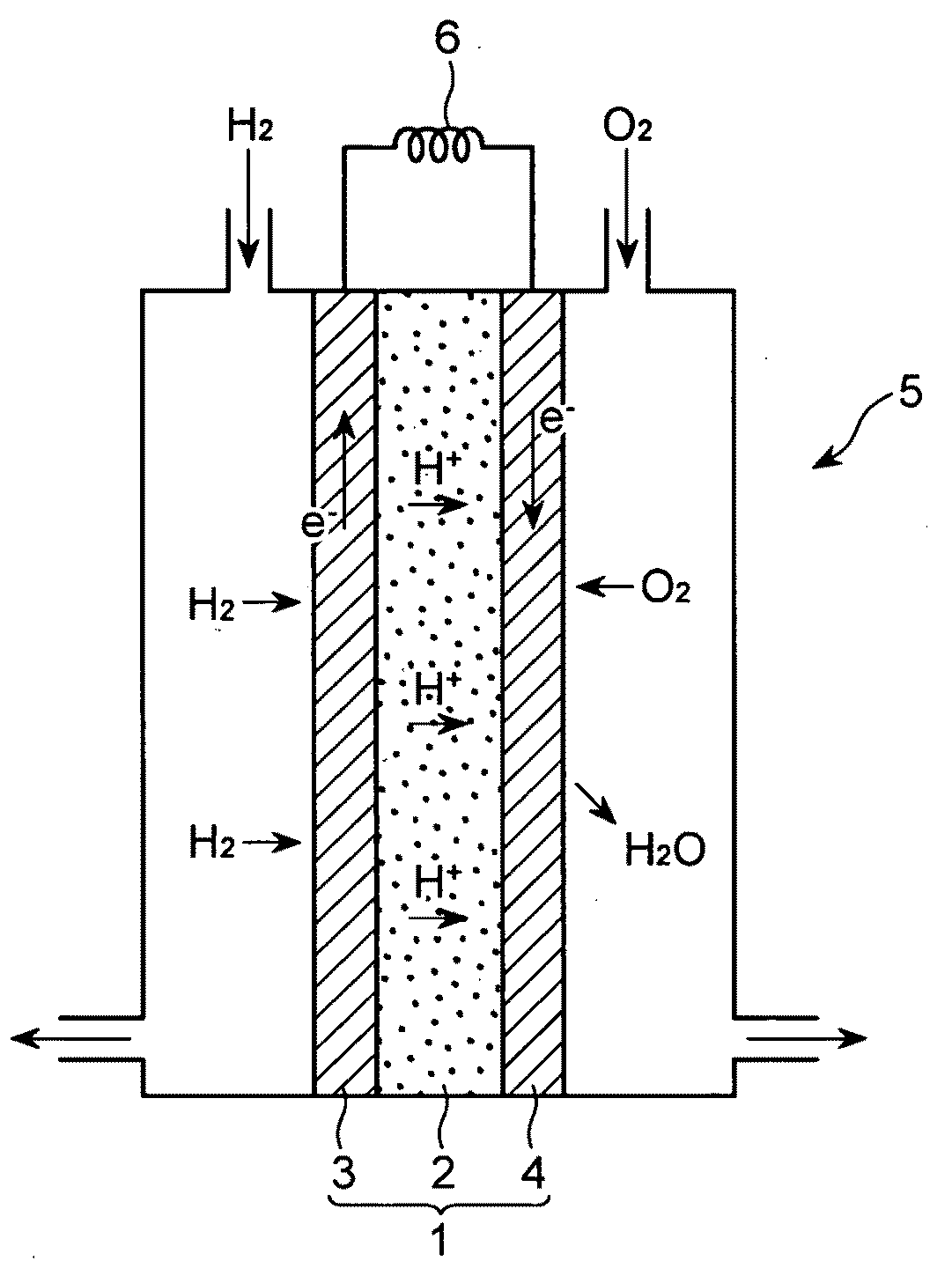Method for producing electrode material for fuel cell, electrode material for fuel cell,and fuel cell using the electrode material for fuel cell
a fuel cell and electrode material technology, applied in the direction of non-metal conductors, cell components, physical/chemical process catalysts, etc., can solve the problems of electrode performance degradation, electrode performance degradation, and the molten to break of membrane electoroly
- Summary
- Abstract
- Description
- Claims
- Application Information
AI Technical Summary
Benefits of technology
Problems solved by technology
Method used
Image
Examples
example 1
[0102]Tin chloride hydrate (SnCl2.2H2O, 2.98 g) was dissolved into pure water (4.5 mL), and dropped into 6%-diluted aqueous ammonia. After dropping tin chloride hydrate, the resultant solution was stirred, filtrated, cleaned, and dried (100 degrees centigrade, 24 hours). Then, the resultant was subjected to a heat treatment at 600 degrees centigrade for 2 hours in an air atmosphere to thereby produce SnO2 particles. Thus obtained SnO2 particles had an average particle diameter (secondary particles) of about 1.0 micrometer.
[0103]Pt was loaded on the SnO2 particles in accordance with the colloid process. An amount of reagent was determined such that an amount of the loaded Pt was 20 wt %. First, H2PtCl6 of 1 g was dissolved into distilled water of 100 mL, and then, was reduced with NaHSO3 of 2 g. Then, the resultant was mixed at about 40 degrees centigrade with SnO2 particles (1.484 g) dispersed in distilled water of 800 mL. Adding NaOH aq into the resultant, 35% peroxide (45 mL) was ...
example 2
[0104]In the method of producing the material in Example 1, a temperature at which the reduction process was carried out in a 5% H2 / N2 atmosphere containing water vapor saturated at 25 degrees centigrade was changed to 150 degrees centigrade. Similarly to Example 1 except the temperature, there was obtained a material of which a fuel cell electrode is composed, in accordance with Example 2.
example 3
[0105]In the method of producing the material in Example 1, a temperature at which the reduction process was carried out in a 5% H2 / N2 atmosphere containing water vapor saturated at 25 degrees centigrade was changed to 200 degrees centigrade. Similarly to Example 1 except the temperature, there was obtained a material of which a fuel cell electrode is composed, in accordance with Example 3.
PUM
| Property | Measurement | Unit |
|---|---|---|
| Temperature | aaaaa | aaaaa |
| Temperature | aaaaa | aaaaa |
| Fraction | aaaaa | aaaaa |
Abstract
Description
Claims
Application Information
 Login to View More
Login to View More - R&D
- Intellectual Property
- Life Sciences
- Materials
- Tech Scout
- Unparalleled Data Quality
- Higher Quality Content
- 60% Fewer Hallucinations
Browse by: Latest US Patents, China's latest patents, Technical Efficacy Thesaurus, Application Domain, Technology Topic, Popular Technical Reports.
© 2025 PatSnap. All rights reserved.Legal|Privacy policy|Modern Slavery Act Transparency Statement|Sitemap|About US| Contact US: help@patsnap.com



